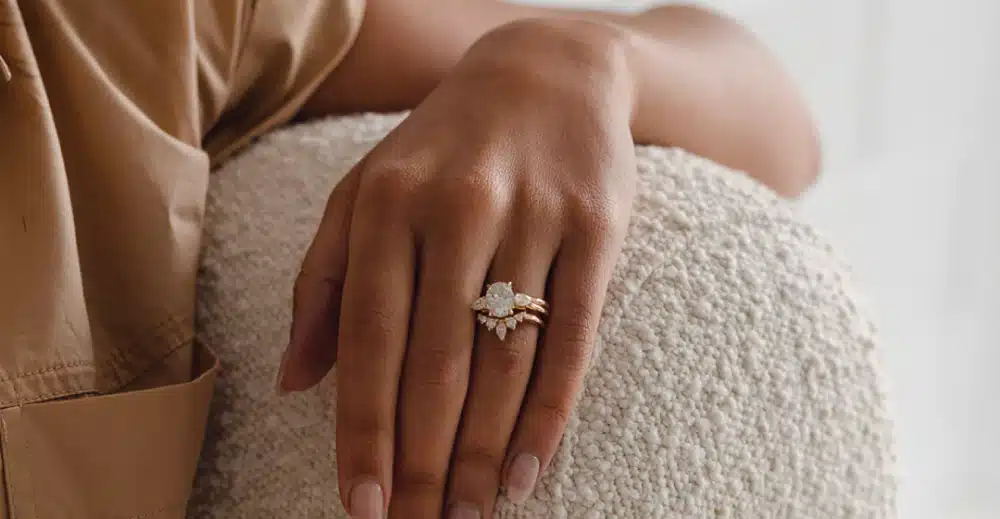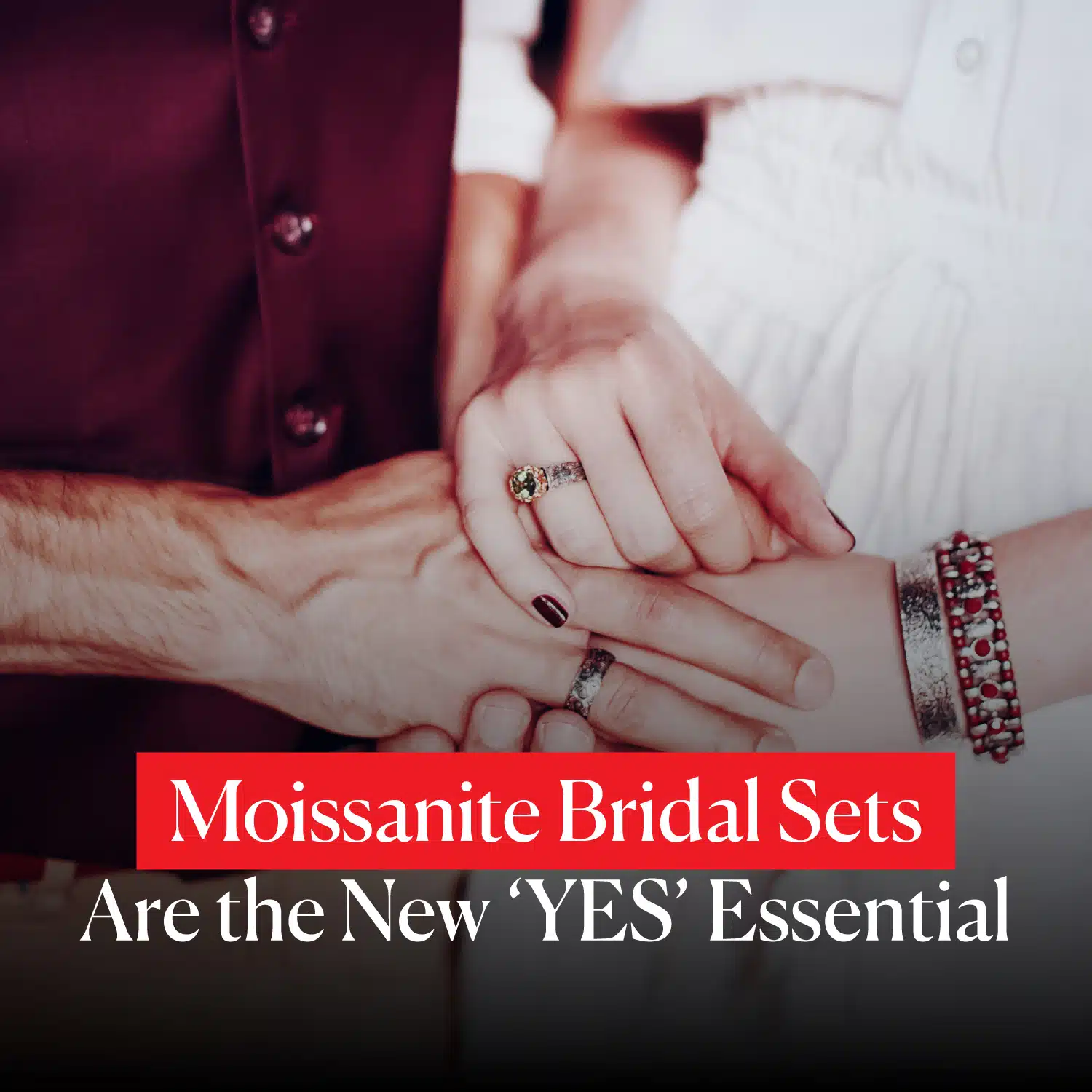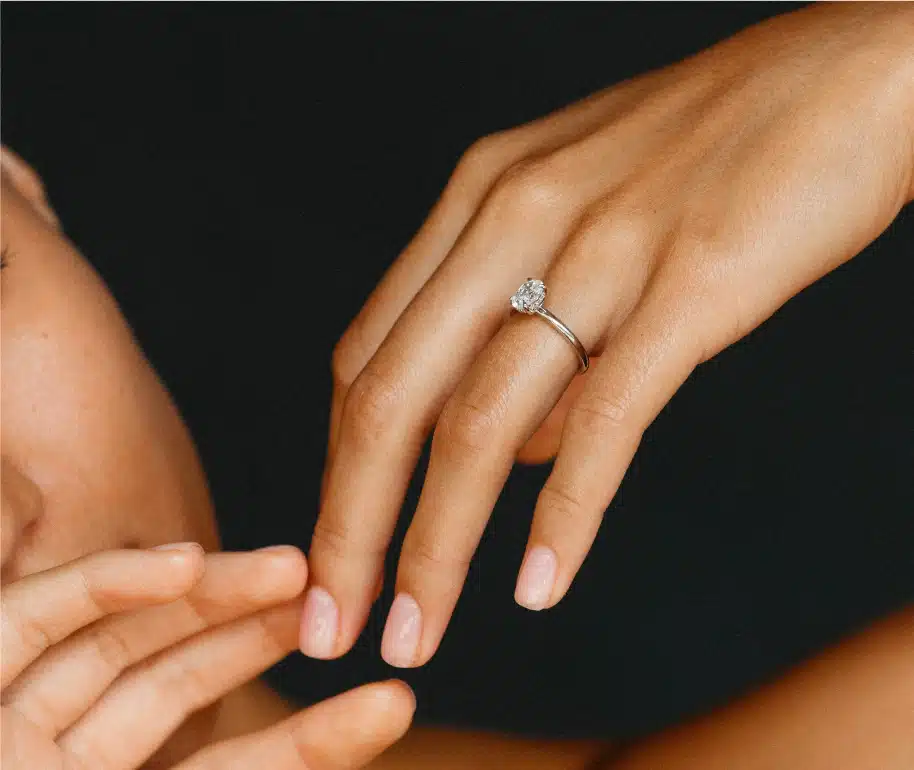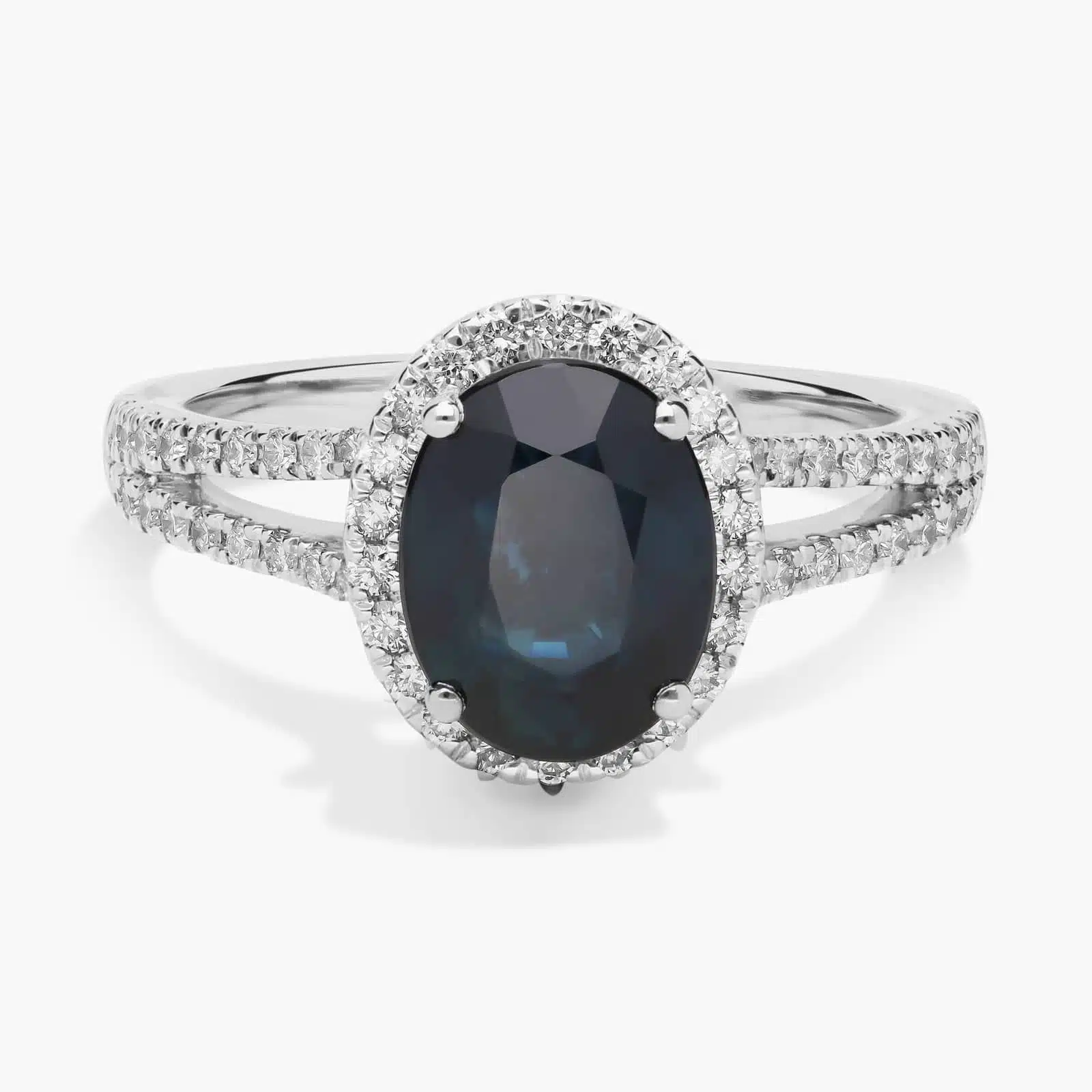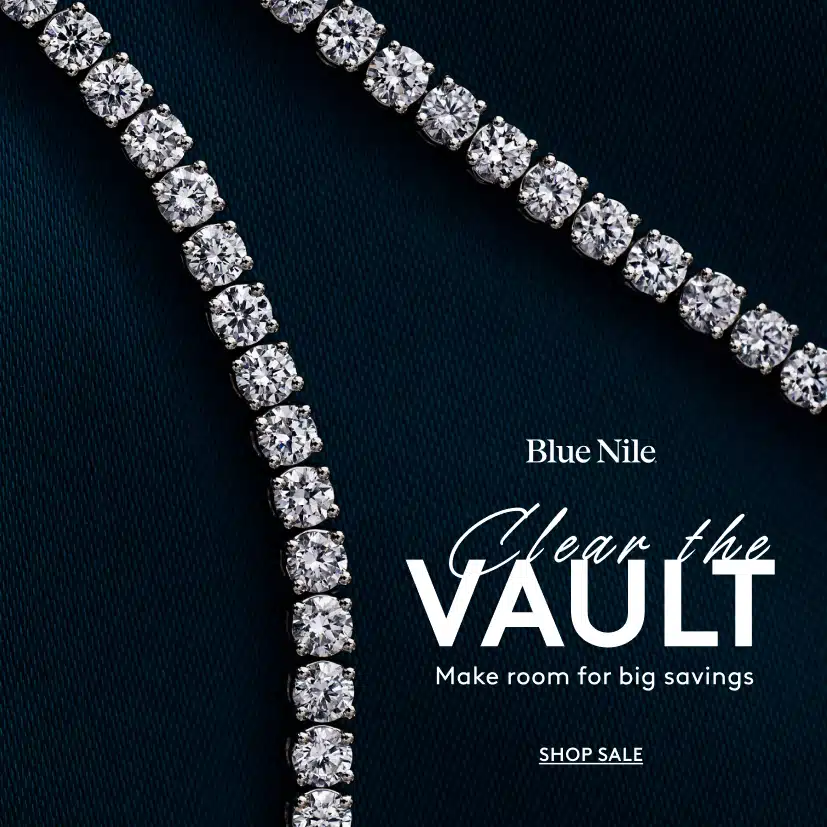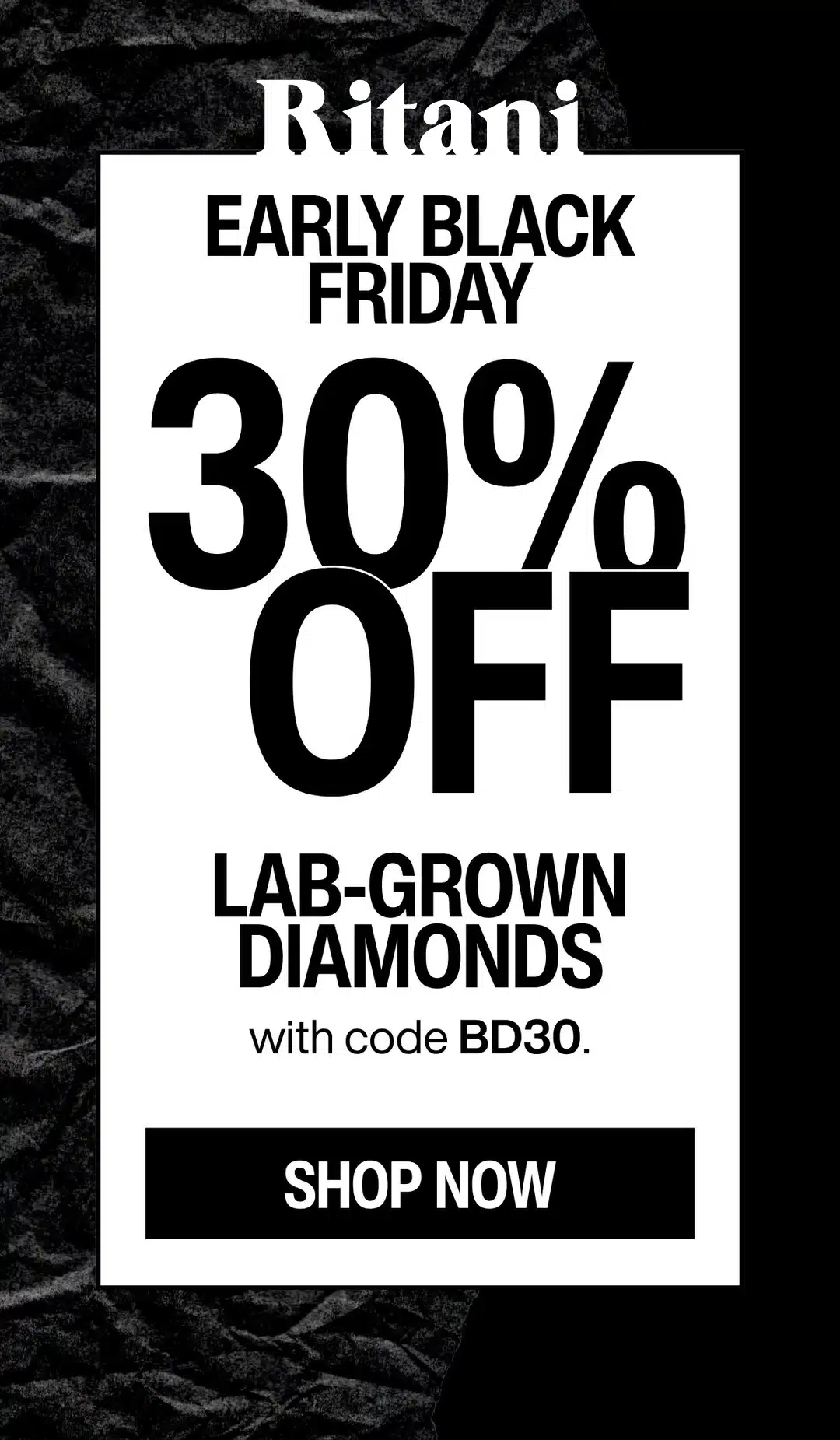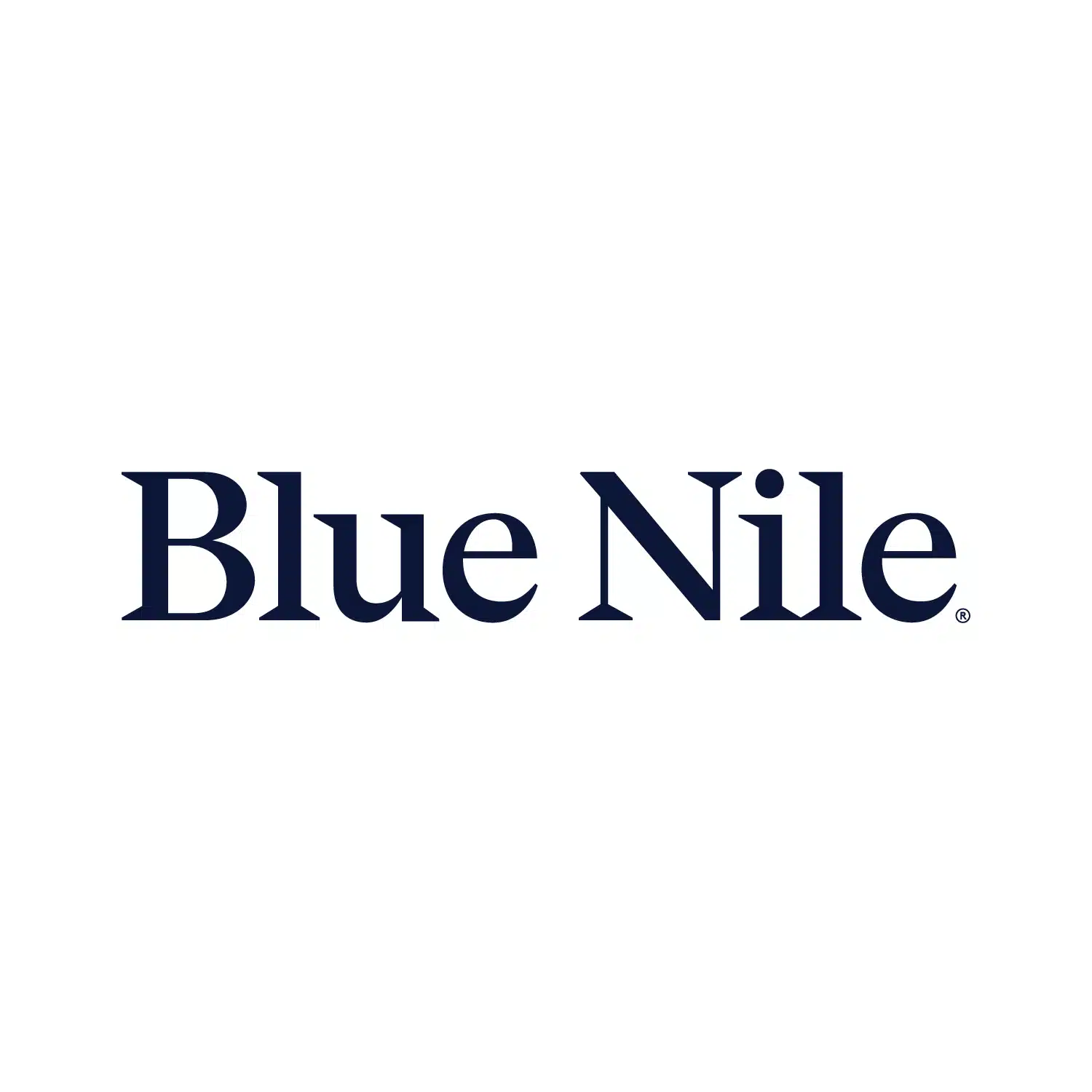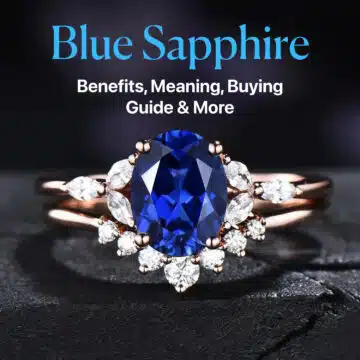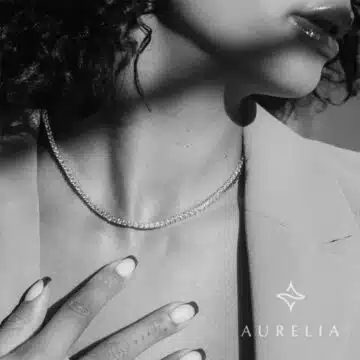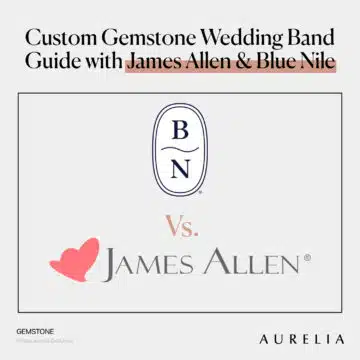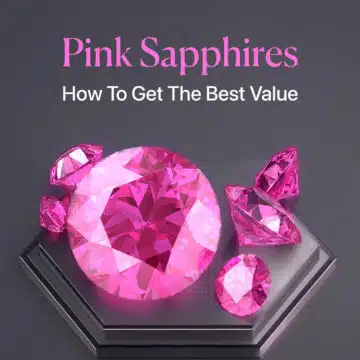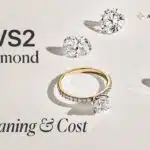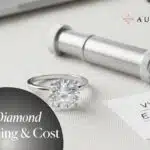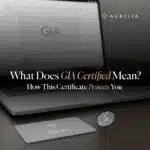Imagine diamonds are like ice cubes—some are super clear, and some have a tiny bit of color. A G color diamond is one that’s almost clear, with just a little hint of yellow, but you’d need a magnifying glass to really see it.
It’s part of something called the “near-colorless” group, which means it looks pretty white and sparkly without costing as much as the super clear ones, like a D color diamond that’s totally colorless.
Why is it important to understand diamond color grades? Well, it’s like picking the right toy—you want something awesome that doesn’t empty your piggy bank. Knowing about G color helps you save money and pick the right diamond for your special ring or gift.
If you’re curious about other colors, I’ve got guides on E color diamonds and F color diamonds too, but today, we’re focusing on G because it’s a sweet spot—great looks for a great price. Let’s dive in and see why it could be perfect for you!
- Understanding Diamond Color Grading
- Visual Appearance of G Color Diamonds
- Pricing of G Color Diamonds
- When to Choose a G Color Diamond
- When Not to Choose a G Color Diamond
- Diamond Cuts and G Color
- Lighting Conditions and G Color Diamonds
- Fluorescence in G Color Diamonds
- Selecting the Best G Color Diamond
- Resale Value and Long-term Retention
- Color Variations Within G Grade
- FAQs
- Conclusion
Understanding Diamond Color Grading

Let’s dive into diamond color grading together—it’s simpler than it sounds, I promise! The GIA color scale for diamonds is what we use, and it runs from D to Z. D is the clearest, like a pure drop of water, while Z has more yellow, like a sunflower petal. This scale helps us figure out how much color a diamond has, and it’s your key to picking the perfect one.
So, where does G color fit in? It’s part of the “near-colorless” group, sitting right between the “colorless” trio of D, E, and F, and the slightly yellower H, I, and J. G has just a faint touch of yellow—nothing you’d notice without a close look under bright light.
Here’s the breakdown. D, E, and F are the top dogs—pure white, like fresh snow. G is right there with them, still bright and stunning. Then H, I, and J have a bit more yellow, but they’re still beautiful. The great thing about G? It looks nearly as good as the colorless ones but costs less, saving you some serious cash.
Curious about diamond sizes? I’ve got a handy diamond carat size chart you can check out later. For now, take a look at this table—it shows why G color is a smart pick:
| Color Grade | Group | What It Looks Like | Price (1 Carat) |
|---|---|---|---|
| D, E, F | Colorless | Pure white, like snow | $5,500 – $7,000 |
| G | Near-Colorless | Nearly white, faint yellow hint | $4,000 – $5,500 |
| H, I, J | Near-Colorless | Slightly more yellow, still nice | $3,500 – $4,500 |
Want to see how shape plays a role? My diamond cut chart explains it all—worth a look when you have a minute. G color gives you that near-colorless shine without the big price jump.
For the full scoop on diamonds, I’ve got a diamond grading chart for the 4 Cs that ties everything together. So, what do you think—G color sounds like a great deal, doesn’t it? Let’s keep exploring!
Diamond IQ Test: Natural or Lab-Grown?
Two identical diamonds: GIA Certified, 1.51ct, D Color, VVS1, Ideal Cut. One is natural ($16,530), the other is lab-grown ($2,390). Choose the diamond you like better and see if you can match it to its origin.
Visual Appearance of G Color Diamonds
Let’s talk about how G color diamonds look—it’s pretty straightforward once you get the hang of it! To your naked eye, a G color diamond is clear and bright, almost like a piece of ice. That’s because it’s in the “near-colorless” group, so any hint of yellow is so tiny you’d need special tools to spot it in normal light.
How does G stack up against other grades? Picture this: D, E, and F are the clearest, like crystal water with no color at all—super pure and white. G is just a step below, still looking crisp and clean. Then you’ve got H, which is slightly yellower, and I and J, where the yellow starts to peek through a bit more.
In real life, though, G holds its own next to D, E, and F—most people can’t tell the difference without squinting hard.
Here’s where it gets interesting: the cut of the diamond changes how you see the color. A round brilliant cut is like a magician—it hides that faint yellow tint better than any other shape because of how it bounces light around. Other cuts, like emerald or princess, might show a bit more of the color since they don’t reflect light the same way.
Want to see this in action? You can play with cuts and colors on my guide to building your own engagement ring on James Allen—it’s a great way to test what you like.
Lifetime Protection Alert!
A James Allen purchase includes a free lifetime warranty. This covers free prong tightening, polishing, and cleaning for life, ensuring your jewelry always looks its best.
For a deeper dive into how color and clarity work together, check out my diamond color and clarity chart. G color diamonds give you that icy look without the high price tag, and the right cut makes them shine even brighter. What do you think—pretty impressive, right?
James Allen is a top leader in online diamond sales, offering cutting-edge imaging technology that lets you inspect diamonds as if you were using a jeweler's loupe. With the largest exclusive selection of loose diamonds available online and excellent pricing, they also boast one of the finest collections of lab-created diamonds on the market. They currently run a 25% discount on selected lab-grown diamonds!
WHAT WE LOVE ABOUT THEM:
- 30-day no-questions-asked return policy, with a prepaid shipping label provided by James Allen.
- Lifetime warranty on all purchases.
- Free international shipping.
- Complimentary prong tightening, repolishing, rhodium plating, and cleaning every six months.
- Insurance appraisals included with purchases.
- One free resizing within 60 days of purchase.
- Free ring inscriptions available.
- Best-in-class high-quality imagery for every diamond in stock.
- 24/7 customer support.
- Premium, best-in-class packaging.
Pricing of G Color Diamonds
Let’s get into the money side of G color diamonds—it’s where things get really practical! If you’re looking at a 1-carat G color diamond, you’re typically paying between $4,000 and $5,500, depending on things like clarity and cut. That’s the average range right now, and it’s a sweet spot for getting a great-looking diamond without spending a fortune.
How does G compare to other colors? Here’s the deal: D, E, and F, the colorless grades, are pricier—think $5,500 to $7,000 for a 1-carat stone with similar clarity (like VS1). G color is 10-25% cheaper, saving you anywhere from $500 to $1,500 or more.
On the flip side, H, I, and J are a bit less expensive than G—H might be around $3,500 to $4,500, with I and J dropping lower. So, G sits nicely in the middle, giving you near-colorless beauty without the big jump in cost.
Want real examples? A 1-carat G color diamond from Blue Nile might run you $4,000, while a D color of the same size could be $5,500. Over at James Allen, you’ll see similar trends—a G color around $4,500 to $5,500, with D climbing higher.
James Allen: Our 5-Star Choice for Price and Selection
Check our comprehensive James Allen Review to learn more about their pricing and commitment.
These prices are based on what’s out there today, March 24, 2025, and they shift a bit with cut, clarity, and market vibes, but G consistently offers solid value.
Here’s a detailed table to break it down for you—accurate and easy to follow:
| Color Grade | Group | Average Price (1 Carat, VS1, Excellent Cut) | Savings Compared to D | Where to Check |
|---|---|---|---|---|
| D | Colorless | $6,500 – $7,000 | – | Blue Nile, James Allen |
| E | Colorless | $6,000 – $6,500 | 5-10% ($300-$500) | Blue Nile, James Allen |
| F | Colorless | $5,500 – $6,000 | 10-15% ($500-$1,000) | Blue Nile, James Allen |
| G | Near-Colorless | $4,000 – $5,500 | 20-25% ($1,000-$1,500) | Blue Nile, James Allen |
| H | Near-Colorless | $3,500 – $4,500 | 30-40% ($1,500-$2,000) | Blue Nile, James Allen |
| I | Near-Colorless | $3,000 – $4,000 | 40-50% ($2,000-$2,500) | Blue Nile, James Allen |
| J | Near-Colorless | $2,500 – $3,500 | 50-60% ($2,500-$3,000) | Blue Nile, James Allen |
This table assumes a 1-carat diamond with VS1 clarity and an excellent cut—pretty standard for engagement rings. You can see G color saves you a chunk compared to D, E, F, but it’s a bit more than H, I, J.
It’s all about what you value—G gives you that near-colorless look without the premium price. What do you think—pretty smart way to shop, right?
When to Choose a G Color Diamond
G color diamonds are a fantastic pick for engagement rings, and I’ll tell you why. They’re perfect for halo settings—those rings with little diamonds circling the big one. Those small diamonds are usually in the F to G range, so a G color center stone blends right in, looking seamless and stunning. You won’t see any weird color clash, just pure sparkle that makes your ring pop.
Another time to go for G is when you want a mix of quality and value. It’s simple: G color saves you money compared to D, E, or F, but it still looks amazing. You get that near-colorless shine without paying extra for something your eyes can’t even spot.
For example, if you’re planning a big day and wondering about wearing your ring, check out my post on do you wear your engagement ring on your wedding day—it ties in perfectly with picking a G color.
If you’re into practical styles, G color works great with low-set engagement rings too. It keeps the focus on that icy look without breaking the bank—see more in my guide on benefits of a low-set engagement ring.
And if you travel a lot, G is a smart choice for a less expensive ring you can wear worry-free—details are in my post on less expensive engagement rings for traveling.
So, if you’re after a ring that’s gorgeous and budget-friendly, G color is your go-to. It’s all about getting the best of both worlds—quality you can see and savings you can feel. What do you think—sounds like a win, right?
Best Deal Of The Year – Final Days
Blue Nile’s “Clear The Vault” is ON.
Shop Fine Jewelry Upto 70% OFF.
*Exclusions may apply. See Blue Nile for complete details.
When Not to Choose a G Color Diamond
Sometimes, G color diamonds aren’t the right fit for you, and that’s okay—I’ll explain why. If you’re after the absolute best color possible, like the clearest, whitest diamond under a magnifying glass, then D, E, or F might be what you want.
Those are the “colorless” grades, and they’re a step above G when it comes to purity. G is near-colorless, but if you’re super picky and want perfection up close, those higher grades shine a bit brighter under scrutiny.
Another reason to skip G? If you can get a similar look for less with an H color diamond. Here’s the thing: the jump in price from H to G can be pretty big—sometimes hundreds of dollars for a 1-carat stone—and it’s more of an industry quirk than a huge difference you’ll notice.
H is just a touch yellower, but to your eyes, it often looks nearly the same as G, especially in everyday light. So, if you’re hunting for value and still want a stunner, H might save you some cash without sacrificing much.
Looking for budget-friendly options? My guide on engagement rings below $1000 has some great ideas where H color diamonds shine—perfect if you’re leaning toward that lower price point. G is awesome, but if top-tier color or max savings is your goal, you’ve got other paths to explore. Makes sense, doesn’t it?
Read Our 5-Star Blue Nile Review
Check our comprehensive Blue Nile review to learn why we rated Blue Nile 5 stars for their exceptional quality and value.
Diamond Cuts and G Color
When you’re picking a G color diamond, the cut can make a huge difference in how that faint yellow tint shows up—or hides. I’m here to break it down for you, because the right cut can either play up the near-colorless beauty of G or let that subtle color peek through more than you’d like.
Let’s explore how different cuts affect color visibility and compare some popular ones with real-world examples.
The way a diamond is cut changes how light bounces around inside it, which directly impacts how much color you see. A round brilliant cut is the champ at hiding color—it’s got 58 facets that scatter light like crazy, masking that tiny yellow hint in a G color diamond.
On the flip side, an emerald cut shows more color. Its long, step-like facets act like a window, letting you see deeper into the stone where any tint is more noticeable. Other cuts, like Asscher and princess, fall somewhere in between, depending on their facet patterns.
Here’s a detailed look at how G color plays out in four big cuts—round brilliant, Asscher, princess, and emerald—with examples inspired by what you’d find at a retailer like Ritani:
- Round Brilliant: This cut is the master of disguise. With its many facets, it reflects light so well that a G color diamond looks icy white to your eyes. Imagine a 1-carat G color, VS2 clarity round brilliant from Ritani—it’s priced around $4,500 and sparkles so much you’d never guess it’s not a D. The color gets lost in all that brilliance.
- Asscher: Think of this as a square emerald cut with a vintage vibe. Its step facets show more color than a round brilliant, but less than an emerald. A 1-carat G color Asscher, say VS1 clarity, might cost $4,800 at Ritani. That faint yellow is subtle, but in bright light, you might catch it if you’re looking closely—still gorgeous, though!
- Princess: This square, brilliant-cut gem is a sparkle machine, though not quite as good at hiding color as the round. Its smaller facets break up light well, so a G color princess—like a 1-carat, VS2 for $4,600 at Ritani—looks bright and white in most settings. The color’s there, but it’s not screaming at you.
- Emerald: Here’s where G color gets more obvious. The emerald cut’s big, open facets don’t hide much, so that yellow tint stands out more, especially in larger stones. Picture a 1-carat G color, VS2 emerald cut from Ritani at $4,300—it’s elegant and clear, but side-by-side with a D, you’d see the difference.
Ritani is a trusted name in the online jewelry industry, known for its stunning collection of ethically sourced diamonds and gemstones. With a focus on transparency, Ritani offers customers in-depth diamond education and innovative features like in-store preview options, ensuring a seamless and informed shopping experience.
WHAT WE LOVE ABOUT THEM:
- Free in-store preview of loose diamonds before purchase.
- 30-day free returns, including resizing services for all rings.
- Lifetime warranty that covers prong tightening, polishing, rhodium plating, and more.
- Free insured shipping on all orders.
- Access to a wide selection of GIA-certified diamonds and lab-grown options.
- High-resolution 360° videos of diamonds for accurate evaluation.
- Ethical sourcing and conflict-free diamonds.
- Buy Now, Pay Later financing options available.
- 24/7 customer service with personalized consultations.
Want to dive deeper into cuts? My diamond cut chart lays it all out—shapes, facets, the works.
For G color, round brilliant is your go-to if you want that tint to vanish, while emerald will show it off more. Asscher and princess strike a balance, giving you sparkle and value.
Lifetime Protection Alert!
A James Allen purchase includes a free lifetime warranty. This covers free prong tightening, polishing, and cleaning for life, ensuring your jewelry always looks its best.
Lighting Conditions and G Color Diamonds
Lighting can totally change how your G color diamond looks, and it’s something not everyone talks about—so let’s get into it! Since G is near-colorless with just a faint yellow tint, the type of light shining on it makes a big difference.
I’ll walk you through how natural and artificial light play with its appearance, plus give you some easy tips to make sure you’re happy with what you see.
In bright store lights—like those super intense ones jewelers use—that tiny yellow in a G color diamond can pop out more. It’s because those lights are designed to show every detail, almost like a magnifying glass for color.
But switch to natural daylight, say outside on a sunny day, and it might look a bit softer, still clear but with a gentle warmth. Then, under your home lamps—like a cozy bulb or LED—the yellow fades, and the diamond looks crisp and white. It’s wild how much the setting shifts what you notice!
Here’s how you can evaluate it before buying. Take that G color diamond and test it under different lights—don’t just trust the store’s glow. Hold it up outside, then bring it near a regular lamp at home if you can. This way, you’ll see how it performs in real life, not just under a spotlight.
A great place to do this is with retailers like Vrai—they’ve got showrooms or online tools where you can check diamonds in various conditions. You want to know it’ll look amazing wherever you wear it, right?
So, lighting’s your secret weapon with G color diamonds. It’s near-colorless beauty shines brightest when you understand how it reacts—bright store lights might show more yellow, but home lamps keep it clear.
Test it out, and you’ll feel confident picking one that dazzles every time. What do you think—ready to play with some light?
Best Deal Of The Year – Final Days
Blue Nile’s “Clear The Vault” is ON.
Shop Fine Jewelry Upto 70% OFF.
*Exclusions may apply. See Blue Nile for complete details.
Fluorescence in G Color Diamonds
Fluorescence might sound fancy, but it’s just how some diamonds glow under UV light—like sunlight or blacklights—and it’s a big deal for G color diamonds. I’m here to unpack what it means for you, since it can either make your diamond pop or throw it off a bit. G color is near-colorless, so fluorescence can really shake things up, for better or worse.
So, what is it? Fluorescence happens when tiny bits of stuff—like nitrogen—get trapped in a diamond as it forms. When UV light hits, those bits light up, usually blue, and about 30% of diamonds do this. For a G color diamond, this glow can tweak how it looks.
It might make it seem whiter, which is cool, or it could turn it hazy and less sparkly, which isn’t. It’s all about the balance.
Here’s how it plays out:
- What Fluorescence Does: Under UV (think sunlight), a G color diamond might glow blue. This can cancel out its faint yellow tint, making it look whiter—like a D or E sometimes. But if the fluorescence is too strong, it can make the diamond look cloudy or oily, dulling that sparkle you love.
- When It’s Beneficial: A medium blue glow can be your friend. It boosts that near-colorless vibe, giving you a whiter look for less money. If your G color diamond has faint to medium fluorescence, it often shines brighter in daylight—perfect for showing off.
- When It’s Detrimental: Strong or very strong fluorescence can backfire. That blue glow might overdo it, leaving your G color diamond hazy or less crisp, especially in bright light. It’s rare—less than 1% of diamonds get this way—but it’s a risk to watch for.
Before you buy, check it out yourself. Places like James Allen let you see G color diamonds up close with 360° videos. Look at them under different lights—UV and regular—to spot any haze or milkiness. You want that G to sparkle, not fade.
Most G color diamonds with fluorescence look great, but seeing it for yourself seals the deal. What’s your take—ready to test some glow?
DIAMOND ON SALE!!
⏰ Tick-Tock! The Best Diamond Deals at James Allen Are Disappearing Fast!
Selecting the Best G Color Diamond
Choosing a G color diamond doesn’t have to be tricky—I’m here to make it clear and simple for you. Since G is near-colorless, it’s already a great pick, but focusing on clarity, cut, and carat weight turns it into something special.
Whether it’s for an engagement ring or a gift, these three things help you get the most sparkle for your money. Let’s break it down into bite-sized pieces so you can pick a winner without any stress.
Diamond Clarity: Keeping It Clean and Bright
Clarity is all about how perfect your diamond looks inside. Every diamond has tiny marks—like little scratches or dots—called inclusions. Think of them as nature’s fingerprints. A G color diamond with VS1 clarity (Very Slightly Included 1) is a fantastic choice because it’s “eye-clean.”
That means you won’t see any flaws just by looking at it—no matter how hard you try! Here’s what you need to know:
- Why VS1 Works: You’d need a jeweler’s magnifying glass (called a loupe) to spot anything, and even then, it’s just a speck—smaller than a grain of sand. It keeps your G color diamond clear and shiny.
- Why It Matters for G: That near-colorless beauty stays front and center with VS1—no distractions from flaws.
- Watch Out: Lower grades like SI1 might show tiny marks up close, which could make the diamond look less lively. Stick with VS1 for a safe, stunning pick.
Want to dig deeper into clarity? My diamond color and clarity chart has all the details you need.
Diamond Cut: Making It Sparkle Like Crazy
The cut isn’t just the shape—it’s how well the diamond’s been crafted to catch light. For G color, this is where the magic happens. An excellent cut turns your diamond into a light show, hiding that faint yellow tint and boosting the dazzle. Here’s the scoop:
- Why Excellent Cut Wins: Picture a round brilliant cut—58 tiny mirrors (facets) bouncing light everywhere. It makes your G color look pure and bright, like a mini spotlight.
- What Happens with a Bad Cut: A sloppy cut lets light slip out the bottom, leaving your G color dull or shadowy—not what you want!
- Best Choice: Go for “excellent” or “ideal” on the GIA report. It’s your guarantee of maximum sparkle.
Curious about shapes? Check out my diamond cut chart—it shows how cuts like round or emerald change the vibe.
Carat Weight: Finding the Right Size
Carat weight is how big your diamond is, and it’s a big deal for picking something you’ll love. A 1-carat G color diamond is a crowd favorite—perfectly balanced for engagement rings. Here’s what to consider:
- What’s 1 Carat Like: It’s about 0.2 grams, 6.5mm wide—small but bold enough to catch eyes without costing a fortune. Think $4,000-$5,500 for G color with VS1 and excellent cut.
- Smaller or Bigger Options: A 0.5-carat is dainty and affordable ($2,000-$3,000), while a 2-carat jumps to $10,000-$12,000. It’s all about what fits your style and budget.
- Why It Pairs with G: At 1 carat, G color shines with VS1 clarity and an excellent cut—size and quality in harmony.
Need help picturing sizes? My diamond carat size chart shows you exactly what to expect.
How to Pick the Best G Color Diamond
Now, let’s tie it all together with some practical steps to snag the best G color diamond. You want something flawless to the eye, sparkly, and the right size—here’s how:
- Get GIA Certified: The Gemological Institute of America (GIA) is the gold standard. They say it best: “A GIA Diamond Grading Report provides a comprehensive evaluation of a diamond’s quality, ensuring you know exactly what you’re getting.” It lists G color, VS1 clarity (or better like VVS2 if you’re feeling fancy), excellent cut, and carat weight—all checked by pros. No guesswork, just facts.
- Look for No Big Flaws: In VS1, inclusions are tiny—like a faint scratch or dot—but nothing dark or obvious. Skip stones with big marks that steal the shine.
- Shop Smart at Blue Nile: Head to Blue Nile—they’ve got GIA reports and 360° videos. You can zoom in on a 1-carat G color, VS1, excellent cut (around $4,500) and see every detail before you buy.
If you’re building a ring, try my guide on building your own engagement ring on James Allen—it’s a fun way to mix clarity, cut, and carat just how you like. With these steps, your G color diamond will be clear, dazzling, and perfect for you. Ready to find it?
Blue Nile is one of the biggest and most recognized online jewelry retailers, offering an extensive and exclusive inventory. Their high-resolution images are improving and getting closer to the quality offered by James Allen, while their prices remain highly competitive. Right now, Blue Nile offers up to 30% savings on jewelry during a limited-time sale.
WHAT WE LOVE ABOUT THEM:
- 30-day no-questions-asked return policy, with a prepaid shipping label provided by Blue Nile.
- Lifetime warranty on all purchases.
- Free shipping on every order.
- Complimentary services every six months, including prong tightening, repolishing, rhodium plating, and cleaning.
- Insurance appraisal included with your purchase.
- One free resizing within the first year.
- High-quality images available for roughly half of their diamond selection.
- 24/7 customer service support.
- Full credit toward future upgrades, as long as the new item is at least double the value.
- Best-in-class order fulfillment process.
Resale Value and Long-term Retention
Wondering how a G color diamond holds up over time compared to pricier D, E, or F grades? I’ve got you covered with the straight scoop on resale value and what keeps your diamond’s worth solid—or not. G color diamonds are a smart buy, but let’s see how they stack up long-term and what really drives their resale price.
A G color diamond holds its value pretty well, especially for a near-colorless stone. It’s not as pristine as D, E, or F—those colorless grades that sparkle like pure ice—but it’s close enough that most people won’t notice the difference without a magnifying glass.
On resale, G tends to fetch a solid return, though D, E, and F often sell for more because they’re rarer and prized by collectors or buyers obsessed with perfection.
Think of it like this: G is the practical choice—great looks for less cash—while D, E, F are the luxury tier that can command a premium, sometimes 20-30% more for a 1-carat stone with similar specs. Still, G isn’t far behind, retaining decent value if you play your cards right.
What keeps that resale value strong? Two big factors: cut quality and market demand. A top-notch cut—like an excellent or ideal round brilliant—makes your G color diamond dazzle, hiding that faint yellow tint and boosting its appeal.
A poorly cut stone, even a D, will sit unsold or sell cheap because it looks dull—cut is king here. Market demand shifts too. Right now, buyers love G color for engagement rings because it balances quality and price, but trends can lean toward colorless D-F stones during luxury booms.
Check out Ritani to see what’s hot—they track real-time demand and show how G color moves compared to D, E, F. For instance, a 1-carat G with VS1 clarity and excellent cut might resell for $3,000-$4,000, while a D with the same specs could hit $5,000-$6,000—solid, but not a dealbreaker for G.
Here’s the bottom line: G color diamonds hold their own for long-term retention, especially if you nail the cut and catch the right market wave. They won’t top D, E, or F in raw resale dollars, but they’re a reliable pick that won’t tank. Want more on cuts or sizing?
Peek at my diamond cut chart or diamond carat size chart—they’ll give you the edge to maximize that value. So, what’s your plan—holding onto that G or trading up?
Color Variations Within G Grade
Not every G color diamond is the same, and that’s a little secret worth knowing! Even though they’re all labeled “G” on the near-colorless scale, some have a bit more yellow than others. I’ll walk you through what makes them different and how to spot the best one for you—it’s easier than you might think.
Why G Color Varies
Here’s the deal: G color diamonds sit in that sweet near-colorless zone, but there’s wiggle room within the grade. The GIA sets a range for G, so one might lean closer to the colorless F side—super faint yellow—while another nudges toward H with a slightly warmer tint.
It’s subtle, but it’s there. Lighting and cut play a role too, but even under the same conditions, two G diamonds can show tiny differences. Let’s break it down:
- Some Look Whiter: A G closer to F might have almost no yellow you can see—think crisp and icy, like a winter morning.
- Some Look Warmer: A G nearer to H could have a faint yellow glow, still pretty, but a touch less bright in super close-up comparisons.
- Why It Happens: It’s all about how the diamond formed—natural quirks in the crystal give each one its own personality.
How to Pick the Best G Color
You don’t have to guess which G is the best—there’s a simple way to find the one with minimal tint. Stick to these steps, and you’ll land a stunner every time:
- Check GIA Reports: The GIA (Gemological Institute of America) grades every diamond, and their report tells you exactly what you’re getting. Look for a G color with no extra notes about brown or gray tints—just pure G goodness.
- Go for Minimal Tint: Ask for a G that’s on the whiter end of the scale. At Vrai, you can see detailed specs and images—pick one that looks crisp, not warm, under their lighting.
- Test in Person if You Can: If you’re at a showroom like Vrai’s, compare a few G diamonds side by side. The best ones will feel bright and clean, even next to each other.
Want more on grading? My diamond grading chart for the 4 Cs dives into how color fits with clarity and cut. With a GIA report and a sharp eye at Vrai, you’ll snag a G color diamond that’s as white as G gets—perfect for showing off. What do you think—ready to hunt for that ideal G?
FAQs
Got questions about G color diamonds? You’re not alone—I’m here to answer them with all the details you need, especially when it comes to diamond settings and halo settings.
Whether you’re picking out an engagement ring or just curious, these answers will clear things up so you can feel confident. Let’s dive into your top five FAQs!
Conclusion
So, what’s the scoop on G color diamonds? They’re near-colorless gems that look almost as white as the priciest D, E, or F grades, but they save you a chunk of cash—think $1,000-$1,500 less for a 1-carat stone. That makes them a brilliant pick for engagement rings, especially if you’re eyeing halo settings or just want a sparkler that wows without breaking the bank.
We’ve covered how G shines bright with the right cut, stays clear with VS1 clarity, and holds solid value over time—pretty sweet deal, right?
You’ve got all the tools now to make a smart choice. Don’t just guess—use what you’ve learned about clarity, cut, lighting, and even fluorescence to find a G color diamond that’s perfect for you.
If you’re stuck or want a second opinion, reach out—I’m here to help at moissanitebyaurelia.com. Just Reach me out Hello@moissanitebyaurelia.com email address, and I will answer all your question regarding G color Diamonds.
And for the best picks, check out retailers like Blue Nile—they’ve got detailed specs and videos to make it easy. Go grab that G color stunner with confidence—you’ve earned it!


